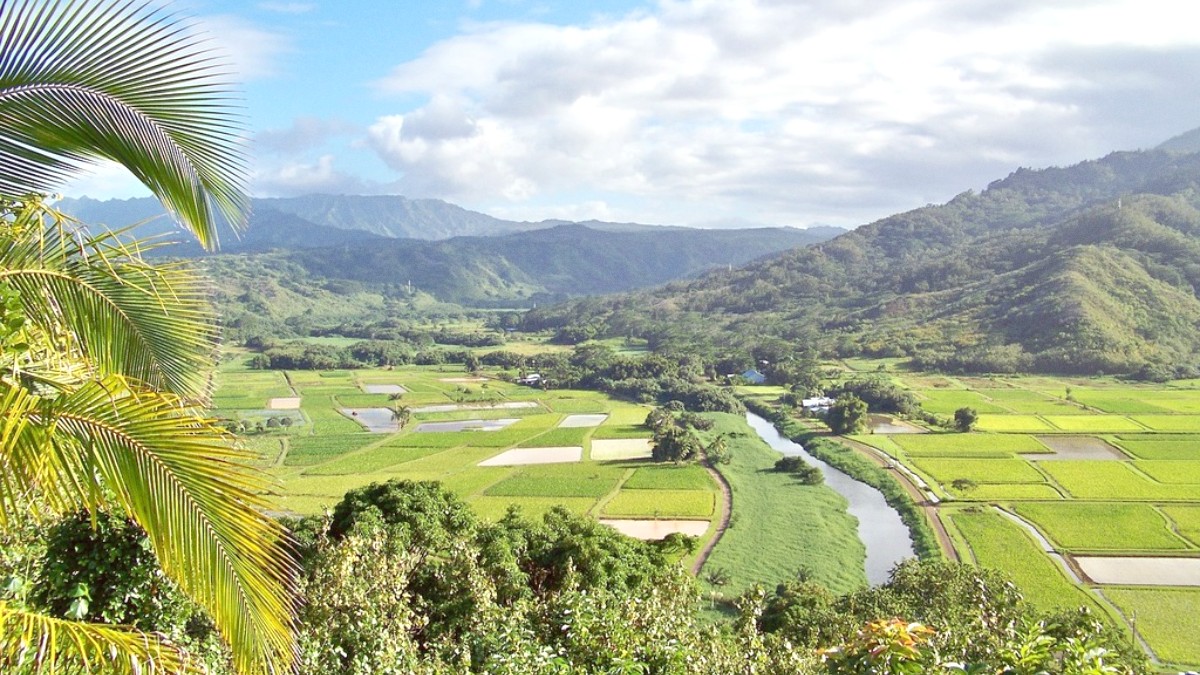
Hawaii, USA
A deep sense of Hawaiian culture and community exists, shaped by centuries of history and diverse influences. Travelers find varied experiences here. Some enjoy challenging hikes to hidden waterfalls. Others prefer snorkeling in clear, warm waters. Many appreciate simply relaxing on a quiet beach, watching the sunset. Dining options span casual food trucks to upscale restaurants. Kauai's character encourages visitors to slow down and appreciate their surroundings.
Kauai is an unique place in Hawaiian history. It is the only major Hawaiian island King Kamehameha I never conquered through warfare. It joined his unified kingdom peacefully in 1810 through diplomatic means. This allowed for a period of more independent development, influencing unique cultural practices and a distinct dialect of the Hawaiian language.
The island saw the first recorded European contact with the Hawaiian Islands when Captain James Cook landed in Waimea in 1778. This event marked a turning point, ushering in an era of increasing foreign influence and trade. Later, Kauai became a significant center for sugar cane plantation agriculture. This industry brought waves of immigrant populations from China, Japan, the Philippines, Portugal, and other countries. These diverse groups shaped Kauai's multicultural identity, traditions, food, and social fabric. Remnants of this plantation era, including historic buildings and old sugar mills, remain part of the island's landscape and heritage.
Kauai spans 552.3 square miles (1,430.5 sq km). This size makes it large enough to offer diverse landscapes and activities yet compact enough to explore comprehensively. The estimated population for 2023 is around 73,800 residents.
Lihue Airport (LIH) serves as the main gateway. Lihue is the commercial hub. Kapaa, on the east side, offers a lively mix of shops and restaurants. Poipu, on the sunny South Shore, is a popular resort area. Princeville, on the North Shore, features upscale resorts. Waimea and Hanapepe on the west side present historical charm.
Hawaii Standard Time (HST), UTC-10:00. Hawaii does not observe Daylight Saving Time.
English and Hawaiian are the official languages. English is spoken universally.
United States Dollar (USD), symbolized by $. Credit cards are widely accepted.
Tropical, warm and humid year-round, with distinct wet (north and east) and dry (south and west) sides.
A blend of natural splendor, cultural depth, and a welcoming atmosphere for memorable travel.
Kauai’s blend of natural splendor, cultural depth, and welcoming atmosphere creates a memorable travel experience.
Experience towering emerald cliffs, deep valleys with hidden waterfalls, and vast tropical rainforests. The Waimea Canyon and Napali Coast are testament to the island's dramatic natural formations.
Explore the island's unique history, from its peaceful integration into the Hawaiian Kingdom to the diverse immigrant influences of the plantation era. This heritage shapes Kauai's distinct identity and local customs.
The island's consistent warmth makes Kauai a desirable destination at any time, but choosing the right season can shape your experience.
Kauai experiences a tropical climate year-round, with distinct seasons.
Average daytime temperatures typically range from 75°F (24°C) in winter to 85°F (29°C) in summer. Nights are usually 10-15°F cooler. The North Shore receives more rainfall from November through March. The South Shore remains comparatively drier. April through October mark the driest months, offering more consistent sunshine across the island. Humidity persists year-round, averaging between 70-80%.
Mid-December to Mid-April; June to August. Weather is warm and sunny, especially on the South Shore. Lively atmosphere, full operation of attractions. Higher prices and more crowds.
April to May; September to Mid-December (excluding holidays). Pleasant weather conditions, fewer crowds, potentially lower prices. Good balance of activities and relaxation.
Mid-April to Early June (excluding Easter); September to Mid-December (excluding Thanksgiving). Best deals on flights and accommodation, fewer tourists. Higher potential for rain, especially North Shore.
Hurricane season runs from June 1 to November 30. Direct hits are rare, but tropical storms or distant hurricanes can bring heavy rains, high surf, and strong winds. Monitor weather forecasts. Heavy rainfall can lead to flash floods, especially on the North Shore. Road closures, like Kuhio Highway past Hanalei, can happen. Always check road conditions before heading out.